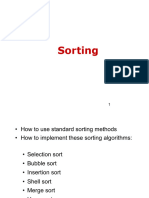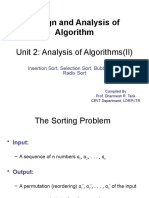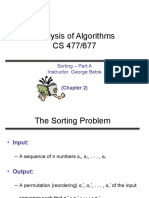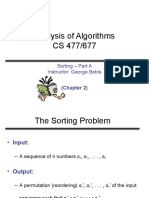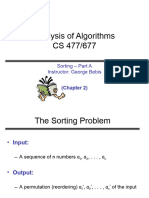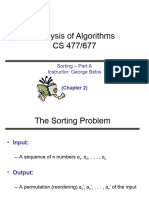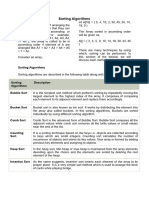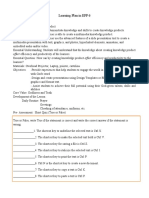0% found this document useful (0 votes)
7 views12 pagesSorting
The document provides an overview of various sorting algorithms, including Bubble Sort, Insertion Sort, Shell Sort, and Partition Sort, explaining their mechanisms and implementations. It also discusses the concept of Amortized Analysis in relation to the Partition Sort algorithm. Each sorting method is described with its algorithmic steps and complexities, emphasizing their educational significance in computer science.
Uploaded by
ryan.philip.sadlerCopyright
© © All Rights Reserved
We take content rights seriously. If you suspect this is your content, claim it here.
Available Formats
Download as PDF, TXT or read online on Scribd
0% found this document useful (0 votes)
7 views12 pagesSorting
The document provides an overview of various sorting algorithms, including Bubble Sort, Insertion Sort, Shell Sort, and Partition Sort, explaining their mechanisms and implementations. It also discusses the concept of Amortized Analysis in relation to the Partition Sort algorithm. Each sorting method is described with its algorithmic steps and complexities, emphasizing their educational significance in computer science.
Uploaded by
ryan.philip.sadlerCopyright
© © All Rights Reserved
We take content rights seriously. If you suspect this is your content, claim it here.
Available Formats
Download as PDF, TXT or read online on Scribd
/ 12




